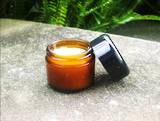Shop
02019
https://www.under5s.co.nz/shop/Hot+Topics+Articles/Babies+%26+Kids+Gear/Out+and+About/does+you+childs+car+seat+have+more+germs+than+your+toilet.html
Do your kids car seats have more germs than a toilet?
|
Who would have thought that your child’s car seat could harbour more germs than your toilet, but a survey carried out by scientists at the University of Birmingham discovered just that. Are you aware of the risks?
|
You might also be interested in ...
Colic - symptoms, causes & treatments
Does your baby suffer from colic? Colic in newborns and young babies is not uncommon. We take a look at the symptoms of colic, possible causes that make infants colicky and the treatment options available to relieve baby colic.
Make your own natural baby bottom balm
This recipe is very easy to make. If you can melt something in a saucepan, you can make this natural baby bottom balm! Perfect for nappy rash.
join usJoin us on social media for all our latest news. |
sign upSign up and receive our latest newsletters. |
|







When scientists from the University of Birmingham took swabs of 20 car seats and 20 homes, they found that there was an average of 100 potentially dangerous bacteria and fungi lurking in each square centimetre of car seat fabric.
This compared to 10-50 different germs on the average household toilet seat, handles and lids.
Some of the bugs they found were potentially dangerous including E. Coli and salmonella, making cars potentially more hazardous and unhealthy than anywhere else in our homes.
When you consider the squashed snacks and spilt drinks, not to mention the occasional nappy disaster or sick accident that end up on your little one’s car seat, it’s perhaps no surprise.
So if your little one’s car seat has seen better days, check to see if you can remove the cover for washing either by hand or in the washing machine. Just don’t tumble dry it as it could shrink the cover, making it difficult to put it back on.
Sponging their car seat down regularly with soapy water will help to remove stains and kill germs, but do this on days when you don’t need to go anywhere as it may take a while to dry out.
Alternatively, try sprinkling the car seat fabric with bicarbonate of soda and then vacuuming the seat, as that helps to remove strong smells and stains too.
Check out our other Hot Topics on:
- Car seat expiry
- Car seat safety for kids in NZ
- Kids gear - cleanliness and hygiene
Image source: motherandbabyuk